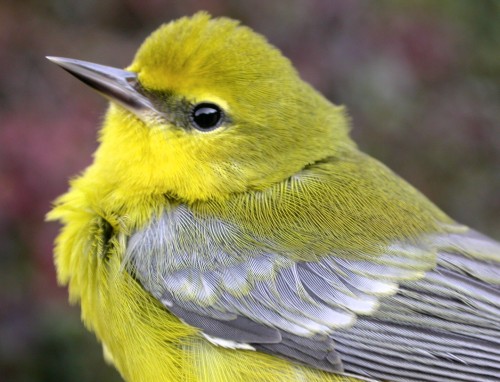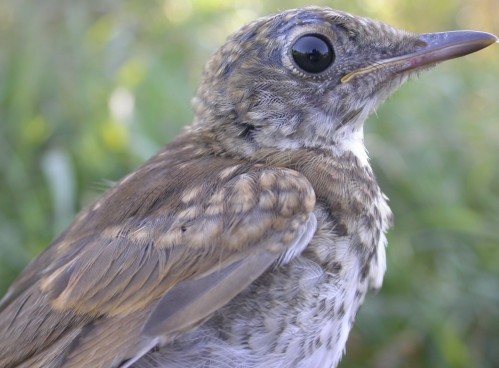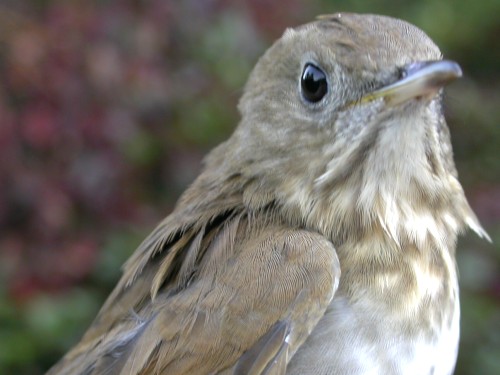|
McGILL BIRD OBSERVATORY |
|||||||||||||||||||||||||||||||||||||||||||||
Welcome to the McGill Bird Observatory weekly report. Click here for a complete listing of our archives. Comments or questions are welcome at mbo@migrationresearch.org.
Bander-in-charge:
Marcel Gahbauer Notes: There were two distinctly different phases to the past week. The first couple of days the weather was still cool, and we banded an almost overwhelming 105 birds in only 66 net hours. After that it became warmer by the day, and we caught only another 91 birds the rest of the week, despite another 180 net hours ... such is the episodic nature of migration monitoring! Despite the weather-related slowdown, it was overall our busiest week ever. Monday morning we set two new records for MBO, with 84 birds banded in a day (previously 81) and 94 birds processed including the 10 recaptures. 47 of the birds banded were warblers, with Tennessee, Nashville, Chestnut-sided, and Magnolia being the most common. We also had our first two Yellow-rumped Warblers of the fall. We expect to continue banding them well into October, so this may be a sign that the early phase of migration is coming toward its end. Tuesday the onslaught continued - we weren't planning to band originally, but were able to squeeze in a couple of hours and caught an additional 21 birds of 15 species during that short time. In sharp contrast, Wednesday was by far the quietest morning we've experienced so far this fall. Just 19 birds banded, with no more than three of any species. Census and overall observations were similarly unimpressive. Thursday morning we did census only, but it gave us cause for optimism. The 43 species observed was one of the highest totals of the year, and it included 13 warbler species. Among them was an unusually early Western Palm Warbler, and a Bay-breasted Warbler, only occasionally seen at MBO. Friday and Saturday were marked principally by a mass movement of Magnolia Warblers. Prior to this week we had banded a total of 15 Magnolia Warblers; over these two days alone we had 33 (in addition to the 15 others earlier in the week). Age and sex classes can be rather confusing with this species, but with this amount of practice we've had a great opportunity for comparison. Though no banding took place on Sunday, they were the most common warbler seen on census. Also on Sunday, the first Red-tailed Hawk of the fall was seen, bringing the season total to 100 species already. Saturday morning also provided the highlight of the week, month, and very possibly season - MBO's first Blue-winged Warbler. While the species has recently expanded its range into southern Quebec, the known population remains limited to fewer than half a dozen pairs, so it seems just as likely that this bird has dispersed far north of its usual range. Other noteworthy birds this week included late-season juveniles of Black-throated Blue Warbler, Nashville Warbler, and Blue-headed Vireo, a recapture of a Tennessee Warbler revealing a two-week stopover at MBO, and a recapture of a Song Sparrow banded here on our third day of operation last September and not seen since October 8, 2004. Also of interest, a hatch-year Veery that we banded as a spotty-plumaged juvenile on July 30, and recaptured today following its first prebasic moult (see comparative photos below).
|



